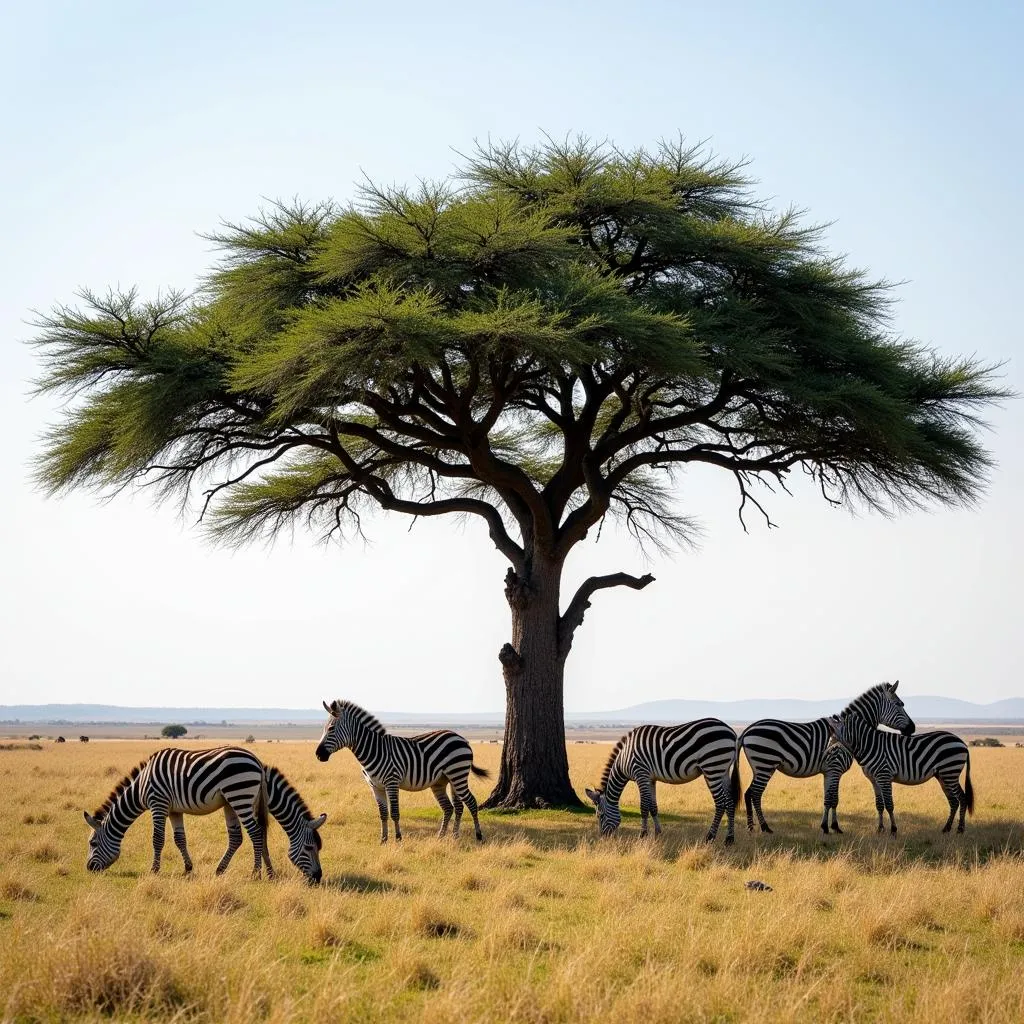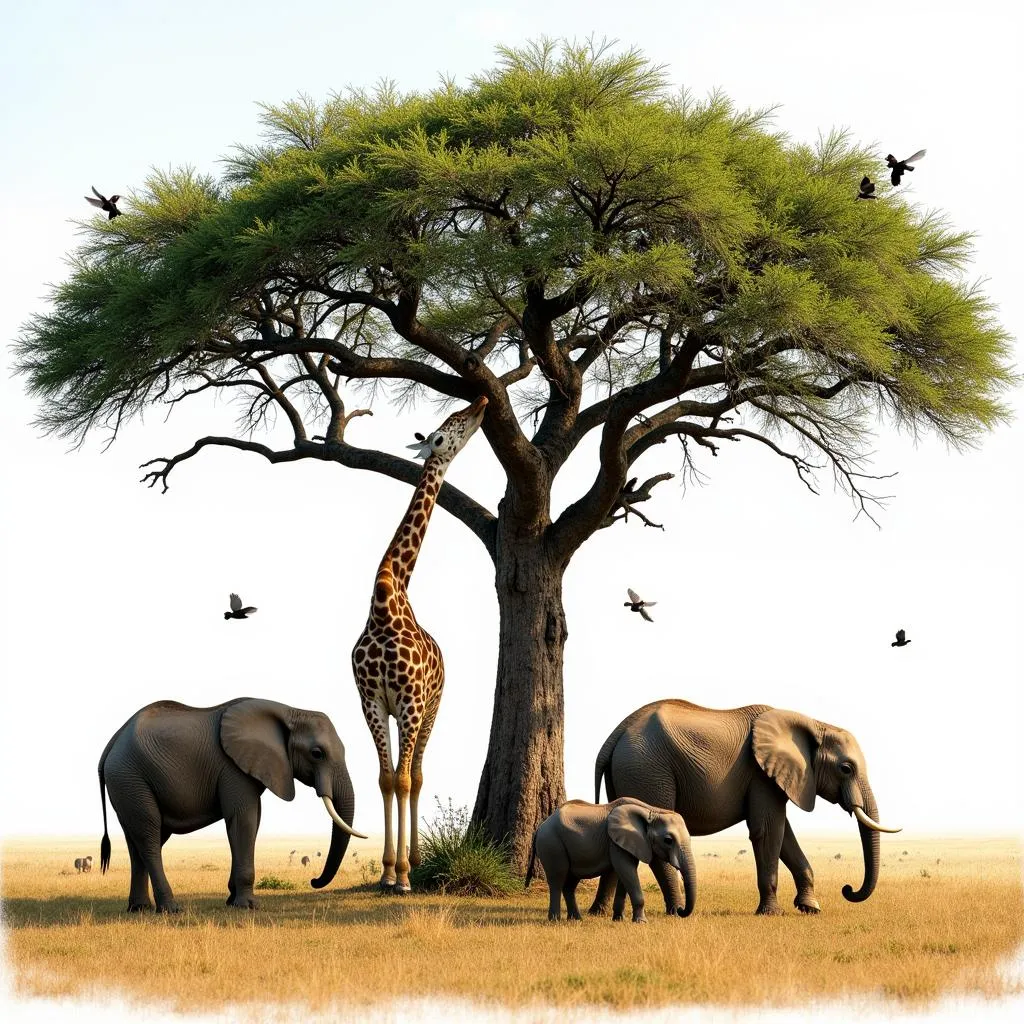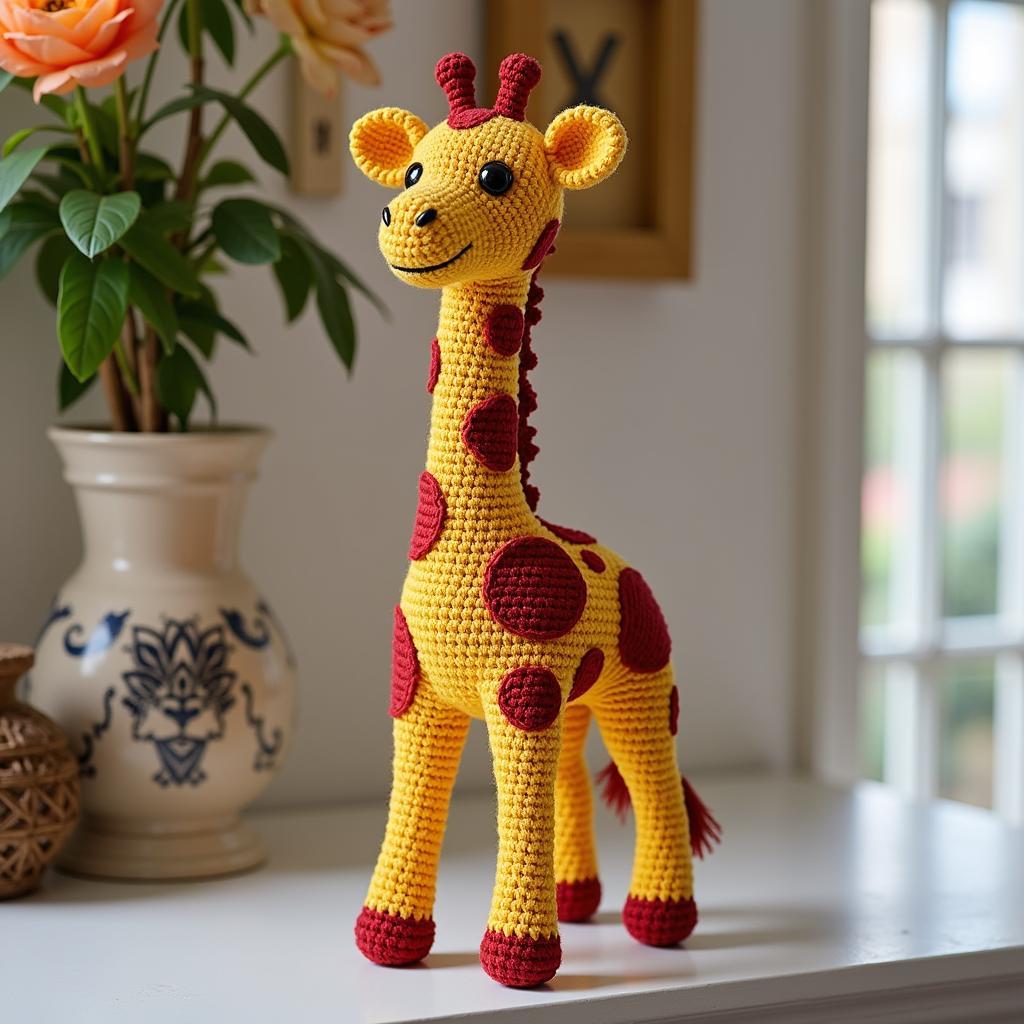The Acacia Tree: A Symbol of Life in the African Savanna
The African savanna is a vast, diverse ecosystem teeming with life. At the heart of this landscape stands a resilient and iconic species – the acacia tree. More than just a source of shade and sustenance, the acacia tree plays a vital role in the intricate web of life that defines this unique environment.
A Tale of Two Worlds: Acacia and the Savanna
The acacia tree, with its distinctive flat-topped canopy and spiky thorns, is a defining feature of the African savanna. This unique adaptation allows the tree to thrive in the hot, dry conditions, providing a haven for a multitude of animals.
The acacia tree’s relationship with the savanna is symbiotic. The tree provides food and shelter for a diverse range of herbivores, including giraffes, zebras, elephants, and antelopes. These animals, in turn, contribute to the acacia’s survival by dispersing its seeds and fertilizing the soil.
 Acacia Tree and Savanna Symbiosis
Acacia Tree and Savanna Symbiosis
A Haven for Wildlife: The Acacia Tree’s Role in Biodiversity
The acacia tree provides not only food and shelter but also a vital source of water for many animals. The tree’s deep root system allows it to tap into underground water sources, even during the dry season. Birds and other animals rely on the tree’s water-filled pods and sap as a source of hydration.
The tree’s spiky thorns are also an important defense mechanism. They protect the tree from predators, allowing the acacia to flourish and provide a safe haven for a variety of smaller animals. The tree’s branches and leaves provide nesting sites for birds and other small animals, further contributing to the rich biodiversity of the savanna.
 Acacia Tree as a Haven for Wildlife
Acacia Tree as a Haven for Wildlife
Beyond Survival: Cultural Significance
The acacia tree holds deep cultural significance for many African communities. It features prominently in traditional beliefs, folklore, and even medicinal practices. The tree’s wood is used for building, crafting, and fuel, while its bark, leaves, and fruits provide medicinal remedies for a variety of ailments.
“The acacia tree is more than just a plant; it’s a symbol of life, resilience, and community,” says Dr. Amina Ndegwa, an anthropologist specializing in African cultural heritage. “The tree has provided for generations and its importance is woven into the fabric of many African cultures.”
Facing Challenges: Threats to the Acacia Tree
While the acacia tree is a symbol of resilience, it faces various threats, including deforestation, drought, and climate change. These factors threaten the tree’s survival and, in turn, the delicate balance of the African savanna ecosystem.
“The acacia tree’s future is intertwined with the well-being of the savanna,” warns Professor Ngozi Okonkwo, an ecologist studying the impacts of climate change on African ecosystems. “Conservation efforts are crucial to ensure the long-term survival of this vital species and the incredible diversity it supports.”
The Acacia Tree: A Call to Action
The acacia tree’s story is a reminder of the delicate interconnectedness of life on our planet. It underscores the importance of preserving natural ecosystems and respecting the cultural heritage that is inextricably linked to them. By protecting the acacia tree, we not only safeguard a crucial part of the African savanna’s biodiversity but also contribute to the preservation of its unique cultural heritage for future generations.
FAQ
Q: What are some of the common species of acacia trees found in the African savanna?
A: Some of the most common species include the Acacia Senegal (also known as the Gum Arabic Tree), the Acacia tortilis (also known as the Umbrella Thorn Acacia), and the Acacia nilotica (also known as the Indian Acacia).
Q: What are some of the traditional uses of the acacia tree in African culture?
A: The acacia tree is used for various purposes in African culture, including:
- Building materials: Its wood is used for building houses, furniture, and tools.
- Fuel: The wood is used for cooking and heating.
- Medicinal purposes: The bark, leaves, and fruits are used to treat a variety of ailments.
- Spiritual significance: The acacia tree is often considered sacred and used in religious ceremonies.
Q: What are the biggest threats to the acacia tree in the African savanna?
A: The biggest threats to the acacia tree include:
- Deforestation: The tree is being cut down for wood, charcoal, and agricultural land.
- Drought: Prolonged droughts are weakening the trees, making them susceptible to disease and pests.
- Climate change: Changing weather patterns and increased temperatures are stressing the trees.
Q: What can be done to protect the acacia tree and its vital role in the African savanna?
A: To protect the acacia tree, we need to:
- Reduce deforestation: Promote sustainable forestry practices and protect existing forests.
- Conserve water resources: Implement water management strategies to mitigate the impact of drought.
- Promote climate change mitigation: Reduce greenhouse gas emissions to limit the effects of climate change on the savanna.
- Support local communities: Empower local communities to manage and protect the acacia tree resources.


